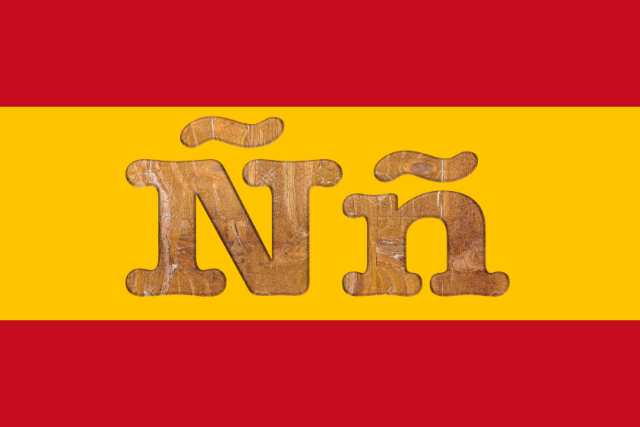To B or not to V: How to know which one to use in Spanish

If you speak Spanish or you’re learning the language, you’ll know that the B and the V are pronounced exactly the same, making it really hard to know which one to use when writing. Here are some tips.
At some point during your Spanish language learning, you’ve probably asked yourself “what’s the point of having two letters which sound exactly the same?”.
We get it, it may seem a bit pointless (not forgetting however that English language learners have roughly the same problem with C and K).
But the truth is that having a B and a V in the Spanish alphabet is useful, even if they’re completely indistinguishable in sound (both of them sound more like B, although some Spanish speakers claim there is a very subtle difference).
Here are some homophone words which sound the same but have a different meaning, and can be told apart thanks to having either a B or a V in writing.
Baca: roof rack or luggage rack
Vaca: cow
Barón: baron/magnate
Varón: son, boy
Bello: beautiful
Vello: bodily hair
Basto: rude
Vasto: vast
Tubo: tube or pipe
Tuvo: had (he had/she had)
Hierba: grass
Hierva: boil (subjunctive or formal imperative)
This of course only solves the issue of a few words in Spanish, which by the way according to Spain’s leading language institution RAE has 88,000 words.
Unfortunately, when it comes to knowing if a word is spelt with a B or a V in Spanish, it’s often a case of just having to learn it off by heart.
But there are some rules which can help you with the B vs V conundrum.
Recognising words written with a B:
Words in which the “b” precedes a consonant.
Examples: “bravo”(fierce), “brazo”(arm) or “blanco” (white)
Past perfect verb tenses that end in "aba", "abas", "abais", "aban" and "ábanos"
Examples: “Cocinaba” (cooked), “bailabais” (you danced), “cantaban” (they sang/they used to sing).
Words that include the prefix "bi", "bis" or "biz"
Examples: “bicampeon” (two-time champion), “bisnieto” (greatgrandson), “bizcocho” (sponge cake).
Verbs that end in "bir", except for “vivir” (to live), “hervir” (to boil) and “servir” (to serve).
Example: “recibir! (receive), “describir” (to describe), “escribir” (to write).
Words that include the prefix "biblio", from the Greek work for “book”
Examples: “biblioteca”(library) or “bibliotecario/a” (librarian).
Words that indicate direction
Examples: “arriba” (up), “abajo” (down), “subir” (to go up) and “bajar” (to go down).
The months of the year that include the B/V sound, except for November which like in English has both letters - “noviembre” .
Examples: “diciembre” (December), “febrero” (February)
Words which have the syllable "bra", "bre", "bri", "bro", "bru"
Examples: “bruja” (witch), “brazalete” (armband), “bronca” (scolding)
Recognising words written with a V:
Words where the B/V sound is preceded by a "b", "d" or an "n".
Examples: “obvio” (obvious), “advertir” (to warn) and “envolver” (to wrap)
Words that begin with the prefix "eva", "eve", "evi" or "evo", except for “ébano” (ebony)
Examples: “event” (evento), “evitar” (to avoid), “evolucionar” (evolve).
Numbers that include the B/V sound
Examples: veinte (twenty), noventa (ninety)
Words ending in "viro", "vira", "voro" and "vora", except “víbora” (viper).
Examples: carnívoro (carnivorous), “devorar” (to devour)
Adjectives ending in "ava", "ave", "avo", "eva", "eve", "evo" and "iva", except “árabe” (Arabic/Arab) and its derivatives.
Examples: “octavo” (eighth), “suave” (soft), “adictivo” (addictive)
Words that begin with the prefix "vice" or "villa"
Examples: “vicepresidente” (vice-president), “villancico”(Christmas carol)
Hopefully that makes things a bit clearer and remember you can always blame any typos on the fact that B and V are next to each other on the keyboard.
And as a final consolation, if you are stuck and want to ask a Spanish friend if a word is spelled with a B and V, at least the words to refer to these consonants are clearly different: B is pronounced “b-e” and V is pronounced “u-ve”.
READ MORE: Five fascinating facts you didn't know about the letter Ñ in Spanish
Comments
See Also
At some point during your Spanish language learning, you’ve probably asked yourself “what’s the point of having two letters which sound exactly the same?”.
We get it, it may seem a bit pointless (not forgetting however that English language learners have roughly the same problem with C and K).
But the truth is that having a B and a V in the Spanish alphabet is useful, even if they’re completely indistinguishable in sound (both of them sound more like B, although some Spanish speakers claim there is a very subtle difference).
Here are some homophone words which sound the same but have a different meaning, and can be told apart thanks to having either a B or a V in writing.
Baca: roof rack or luggage rack
Vaca: cow
Barón: baron/magnate
Varón: son, boy
Bello: beautiful
Vello: bodily hair
Basto: rude
Vasto: vast
Tubo: tube or pipe
Tuvo: had (he had/she had)
Hierba: grass
Hierva: boil (subjunctive or formal imperative)
This of course only solves the issue of a few words in Spanish, which by the way according to Spain’s leading language institution RAE has 88,000 words.
Unfortunately, when it comes to knowing if a word is spelt with a B or a V in Spanish, it’s often a case of just having to learn it off by heart.
But there are some rules which can help you with the B vs V conundrum.
Recognising words written with a B:
Words in which the “b” precedes a consonant.
Examples: “bravo”(fierce), “brazo”(arm) or “blanco” (white)
Past perfect verb tenses that end in "aba", "abas", "abais", "aban" and "ábanos"
Examples: “Cocinaba” (cooked), “bailabais” (you danced), “cantaban” (they sang/they used to sing).
Words that include the prefix "bi", "bis" or "biz"
Examples: “bicampeon” (two-time champion), “bisnieto” (greatgrandson), “bizcocho” (sponge cake).
Verbs that end in "bir", except for “vivir” (to live), “hervir” (to boil) and “servir” (to serve).
Example: “recibir! (receive), “describir” (to describe), “escribir” (to write).
Words that include the prefix "biblio", from the Greek work for “book”
Examples: “biblioteca”(library) or “bibliotecario/a” (librarian).
Words that indicate direction
Examples: “arriba” (up), “abajo” (down), “subir” (to go up) and “bajar” (to go down).
The months of the year that include the B/V sound, except for November which like in English has both letters - “noviembre” .
Examples: “diciembre” (December), “febrero” (February)
Words which have the syllable "bra", "bre", "bri", "bro", "bru"
Examples: “bruja” (witch), “brazalete” (armband), “bronca” (scolding)
Recognising words written with a V:
Words where the B/V sound is preceded by a "b", "d" or an "n".
Examples: “obvio” (obvious), “advertir” (to warn) and “envolver” (to wrap)
Words that begin with the prefix "eva", "eve", "evi" or "evo", except for “ébano” (ebony)
Examples: “event” (evento), “evitar” (to avoid), “evolucionar” (evolve).
Numbers that include the B/V sound
Examples: veinte (twenty), noventa (ninety)
Words ending in "viro", "vira", "voro" and "vora", except “víbora” (viper).
Examples: carnívoro (carnivorous), “devorar” (to devour)
Adjectives ending in "ava", "ave", "avo", "eva", "eve", "evo" and "iva", except “árabe” (Arabic/Arab) and its derivatives.
Examples: “octavo” (eighth), “suave” (soft), “adictivo” (addictive)
Words that begin with the prefix "vice" or "villa"
Examples: “vicepresidente” (vice-president), “villancico”(Christmas carol)
Hopefully that makes things a bit clearer and remember you can always blame any typos on the fact that B and V are next to each other on the keyboard.
And as a final consolation, if you are stuck and want to ask a Spanish friend if a word is spelled with a B and V, at least the words to refer to these consonants are clearly different: B is pronounced “b-e” and V is pronounced “u-ve”.
READ MORE: Five fascinating facts you didn't know about the letter Ñ in Spanish

Join the conversation in our comments section below. Share your own views and experience and if you have a question or suggestion for our journalists then email us at [email protected].
Please keep comments civil, constructive and on topic – and make sure to read our terms of use before getting involved.
Please log in here to leave a comment.